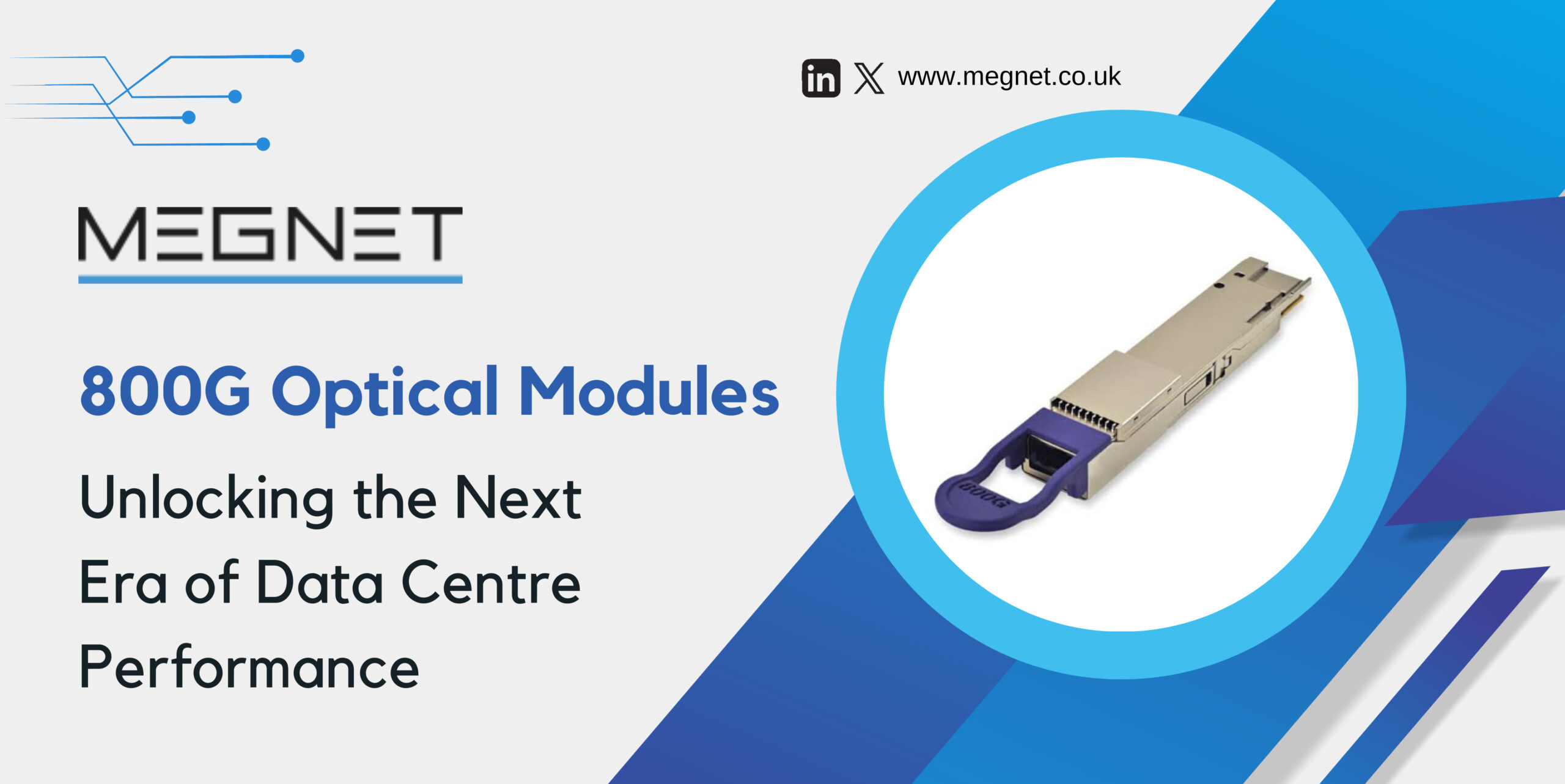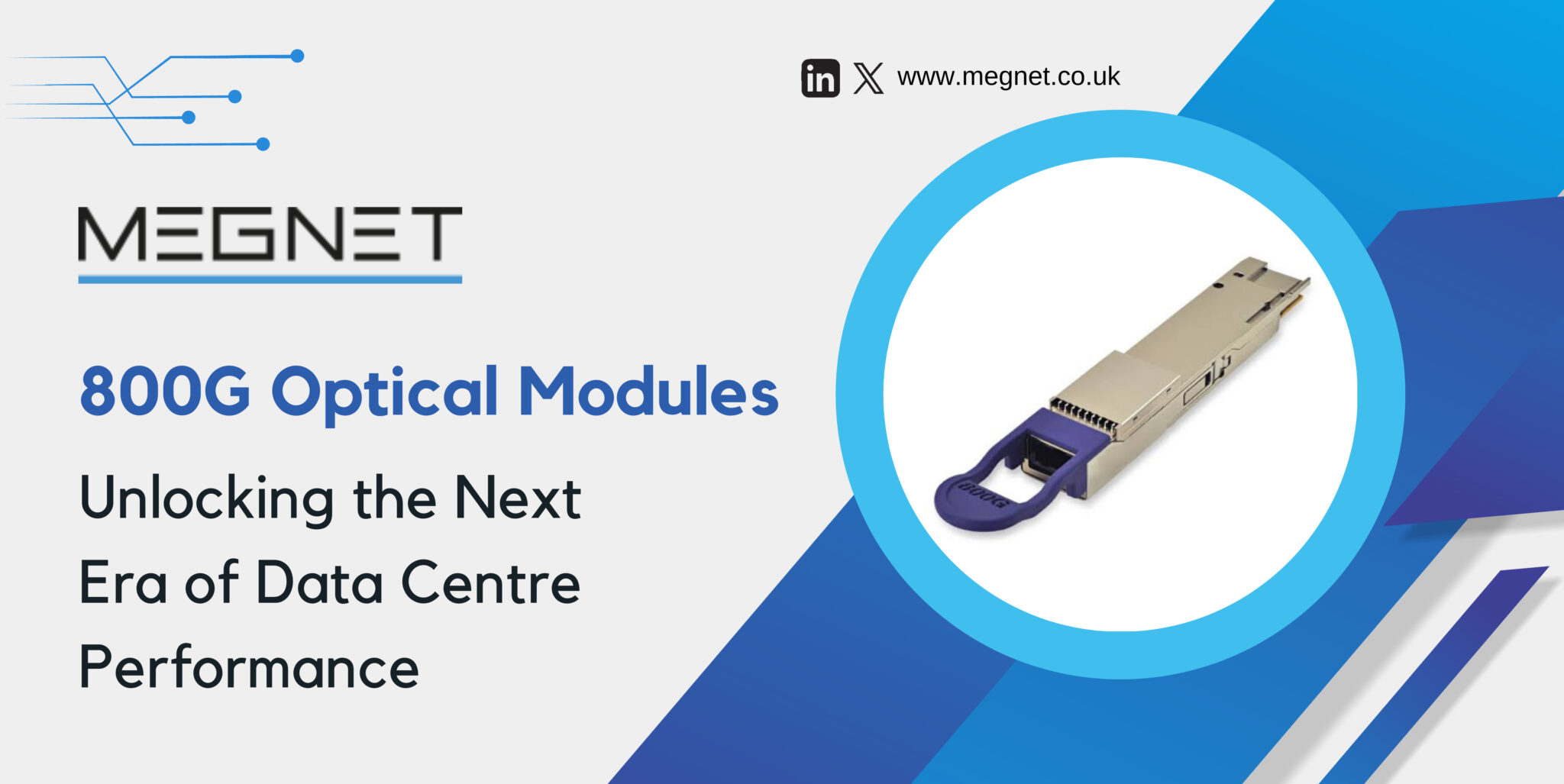
The digital landscape is evolving at breakneck speed, and data centres – the throbbing hearts of this new world – are struggling to keep pace. The insatiable demand for information, from high-resolution video streaming to complex scientific simulations, strains current network infrastructure. Enter the 800G optical module: a blasing-fast technology poised to revolutionise the way we manage and move data.
800G optical modules are cutting-edge devices that enable data transmission at astounding speeds of 800 gigabits per second (Gbps). Imagine it – downloading an entire season of your favorite show in mere seconds, or transferring massive scientific datasets with near-instantaneous speed. This incredible power isn’t just about numbers; it’s about transforming how we interact with and utilise data.
These modules work by converting electrical data signals into pulses of light that travel through optical fibres. This fiber-optic medium boasts several advantages over traditional copper cables, including reduced interference, higher bandwidth, and longer transmission distances. The result? Data rockets through the network with minimal latency, minimising delays and maximising processing efficiency.
But the benefits of 800G extend far beyond sheer speed. Data centres grappling with network congestion and growing storage needs find solace in the increased capacity offered by these modules. 800G reduces the number of necessary cables and network ports, simplifying infrastructure management and minimising costs. Additionally, lower power consumption further enhances operational efficiency and environmental sustainability.
So, how exactly are data centres harnessing the power of 800G modules? Cloud computing platforms, for instance, rely on their high bandwidth to seamlessly deliver services to millions of users simultaneously. Financial institutions leverage the near-zero latency to execute high-frequency trading algorithms with precision. And, video streaming giants embrace 800G to ensure flawless delivery of ultra-high-definition content.
But the story doesn’t end there. While data centres remain the primary beneficiaries, 800G optical modules are finding unexpected applications in diverse industries.
Medical Imaging: Imagine a world where a high-resolution MRI scan can be transferred to a specialist across the globe in seconds, potentially saving a life. 800G enables such possibilities, facilitating remote consultations and real-time diagnoses. With medical data growing exponentially, these modules ensure efficient storage and faster analysis, leading to improved patient care.
Video Streaming: The insatiable demand for 4K and 8K content pushes the boundaries of existing networks. 800G steps in, providing the backbone for smooth streaming without buffering or interruptions. Live sports broadcasts, virtual reality experiences, and immersive gaming environments all benefit from the unhindered data flow made possible by these modules.
Scientific Research: From intricate gene sequencing to complex climate simulations, scientific research generates and consumes massive amounts of data. 800G empowers researchers to share, analyse, and collaborate on datasets like never before. Large-scale experiments and global research initiatives become seamless with the near-instantaneous transfer of information across continents.
The impact of 800G optical modules extends beyond individual industries. They are the driving force behind a paradigm shift in data centre operations. 5G networks rely on them for backhaul infrastructure, paving the way for ultra-fast mobile internet. Artificial intelligence and machine learning algorithms, fueled by vast datasets, also benefit from the increased data transfer rates facilitated by 800G.
As mentioned, 800G’s impact extends beyond traditional data centre walls, weaving its magic into a diverse tapestry of sectors. Here are some additional highlights:
Industrial Automation: With factories becoming increasingly digitalised, real-time data exchange between machines and control centres is crucial. 800G facilitates seamless communication, enabling efficient production processes, predictive maintenance, and remote monitoring. Imagine optimising energy consumption in a smart grid or managing complex robots on a production line – all made possible by the instantaneous data flow of 800G.
Autonomous Vehicles: The future of transportation lies in connected cars navigating a dynamic, data-driven landscape. 800G empowers vehicles to exchange critical information about their surroundings and traffic patterns in real-time, aiding in safer and more efficient autonomous driving experiences. Picture cars sharing weather updates, road hazards, and even accident alerts with lightning speed, paving the way for a safer and smoother autonomous future.
Disaster Response and Emergency Management: Time is of the essence in emergency situations. 800G enables rapid sharing of high-resolution images and real-time data from drones and sensors, empowering first responders to make informed decisions quickly and effectively. Imagine coordinating rescue efforts, directing resources, and even providing medical assistance remotely – all thanks to the unhindered data exchange facilitated by 800G.
Gaming and Virtual Reality: Immersive entertainment demands high-bandwidth, low-latency networks. 800G fuels the next generation of VR and gaming experiences with smooth, responsive gameplay and breathtaking visual fidelity. Imagine exploring vast virtual worlds with friends across the globe, or battling opponents in real-time without a hint of lag – all courtesy of the lightning-fast data transfer of 800G.
Security and Encryption: As data volumes skyrocket, so does the need for robust security measures. 800G enables faster encryption and decryption processes, enhancing data protection and safeguarding sensitive information. Imagine financial transactions processed securely in milliseconds, or confidential government documents transferred with military-grade encryption – all powered by the reliable and high-speed infrastructure of 800G.
The Dawn of a Connected World:
These are just glimpses into the vast potential of 800G optical modules. As the technology matures and becomes more accessible, we can expect even more transformative applications to emerge, across industries and even in our daily lives. From smart homes seamlessly communicating with energy grids to connected cities optimising traffic flow, the possibilities are endless.
With 800G powering the backbone of our data-driven world, we stand at the dawn of a connected era, where information flows freely, fueling innovation, collaboration, and progress across the globe. This technological revolution promises not just speed and efficiency, but a fundamentally reimagined relationship with data – one that fosters a more interconnected, informed, and ultimately, better future for all.
In conclusion, 800G optical modules are far more than just another data centre upgrade. They represent a fundamental shift in how we handle and interact with data. They empower us to push the boundaries of science, entertainment, and communication, all while paving the way for a faster, more efficient, and interconnected future. The revolution may be silent, but it’s happening before our eyes, fueled by the unyielding pulse of light through these tiny yet powerful modules.
As we stand at the precipice of this data revolution, a question remains: are we ready to harness the full potential of 800G technology? The answer lies in our collective understanding of its transformative power and proactive adaptation to the network landscapes it shapes. The possibilities are limitless, and the future, illuminated by the light of 800G, beckons us to explore it with boundless curiosity and ingenuity.

FAQ's
800G optical modules are the next generation of high-speed data transmission technology for data centers. They offer significantly faster data transfer rates compared to previous generations (100G, 200G, 400G), enabling efficient handling of ever-growing data demands.
Increased Bandwidth: Supports high-bandwidth applications like artificial intelligence (AI), machine learning (ML), and cloud computing. Higher Density: Enables connecting more servers and devices within a data center using fewer cables, saving space and improving efficiency. Improved Scalability: Supports future growth and allows for easier scaling of data center capacity. Potential for Lower Power Consumption: Newer 800G module designs aim for lower power usage per Gigabit compared to previous generations.
While 400G is still widely used, 800G offers double the data transfer speed. This translates to faster processing, reduced latency, and improved overall data center performance.
Cost: 800G modules are currently more expensive than previous generations. Compatibility: Ensuring compatibility with existing network infrastructure might require upgrades to switches, routers, and cabling. Technical Expertise: Integrating and managing 800G solutions may require specialized technical knowledge.
Data centers experiencing bandwidth limitations, Deploying high-performance computing applications,Future-proofing your data center.
Yes, there are options for single-mode and multi-mode fiber connections, catering to various distances and data center layouts.
While 800G is cutting-edge, research and development are ongoing for even faster speeds like 1.6Tbps in the future.








Leave a comment
Your email address will not be published. Required fields are marked *